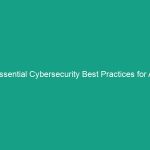Introduction
Good morning team,
Today, we are going to talk about an essential aspect of Workplace Safety: Electrical Safety Audits. This Toolbox Talk aims to equip you with the knowledge to identify and correct Electrical Hazards. Understanding these principles is crucial not just for compliance, but for ensuring that we all return home safely at the end of the day.
Why is this topic important? Electrical Hazards can lead to severe injuries or even fatalities. By conducting regular Safety audits, we can proactively identify risks and mitigate them before they become incidents.
Understanding Electrical Safety Audits
An Electrical Safety Audit is a systematic evaluation designed to identify potential electrical Hazards, assess risks, and ensure compliance with safety Standards. These audits are essential in maintaining safe working conditions, particularly in environments where electrical equipment is heavily utilized.
It’s important to note that an audit isn’t just a checklist of compliance; it’s a critical analysis of how electrical systems are functioning and whether they pose a risk to employees or equipment.
Many misconceptions exist around electrical safety audits, such as thinking they are only necessary for large organizations. In reality, every workplace that uses electrical systems should conduct these audits regularly.
Key Hazards, Risks, and Safety Considerations
When we think about electrical safety, several key hazards come to mind:
- Overloaded Circuits: This can lead to overheating and Fires.
- Faulty Wiring: Old or damaged wiring can cause short circuits or electrical shocks.
- Lack of Grounding: Proper grounding is essential to prevent electrical shock.
- Inadequate Maintenance: Regular maintenance is critical to ensure safety and operational efficiency.
- Inappropriate Use of Equipment: Using equipment for unintended purposes can lead to accidents.
Ignoring these hazards can have severe consequences, such as injuries, fatalities, and even legal repercussions for the organization. It’s imperative to take these risks seriously.
Best Practices, Procedures, & Actionable Advice
To maintain a safe Environment, follow these Best Practices when conducting electrical safety audits:
Step-by-Step Safety Procedures
- Preparation: Gather all necessary tools and safety equipment before beginning the audit.
- Visual Inspection: Check for any visible signs of damage, such as frayed wires or scorch marks.
- Test Equipment: Use appropriate testing devices to check the functionality of electrical systems.
- Document Findings: Keep a detailed record of all observations and any corrective actions taken.
- Follow Up: Schedule a follow-up audit to ensure that corrective measures have been implemented effectively.
Real-Life Example: In a recent incident, a manufacturing plant suffered a fire due to an overloaded circuit that had gone unnoticed during previous audits. Regular audits could have prevented this hazard from becoming a reality.
Regulations, Standards, and Compliance
Compliance with safety Regulations is not just a legal requirement; it’s essential for protecting employees. Organizations must adhere to standards set by OSHA, IEC, and local regulations concerning electrical safety.
For example, osha‘s guidelines stipulate that all electrical installations must be inspected, and any issues must be rectified promptly. This not only protects employees but also safeguards the company against potential lawsuits and fines.
Employee Engagement & Discussion
Now that we have covered the essentials of electrical safety audits, let’s open the floor for discussion. Think about your experiences:
- What safety challenges have you encountered related to electrical systems?
- Have you noticed any areas in our workplace that might need immediate attention?
- What steps do you think we can take to improve our current audit processes?
Conclusion & Key Takeaways
In summary, conducting regular electrical safety audits is crucial for identifying and correcting hazards in the workplace. By following the Best Practices outlined today, we can create a safer environment for everyone.
Remember, safety is everyone’s responsibility. Prioritizing these audits not only protects you but also your colleagues and the entire organization.
Thank you for your attention and your commitment to making our workplace a safer place. Let’s continue to work together to identify and correct hazards as they arise!


